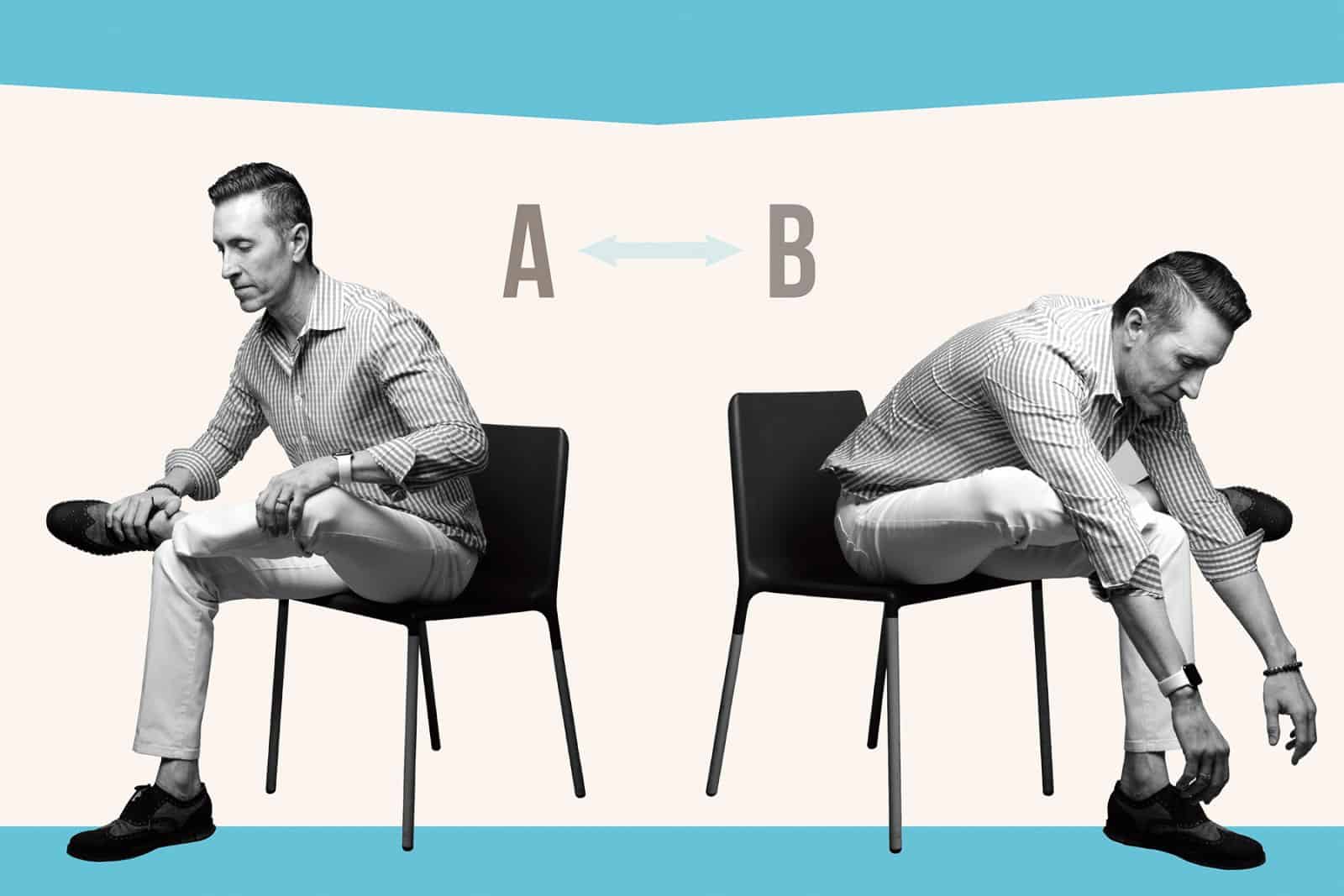Good posture is vital to healthy living. It enables your body to efficiently handle the constant strains of pushing, pulling, or carrying heavy items and the constant force of gravity exerted on them. Good posture works to promote strength, good body adaptability, and flexibility in movement with minimum ease.
On the flip side, bad posture poses several hazards leading to deteriorating health and constant body aches. Some of the adverse effects of poor posture include:
and constant body aches. Some of the adverse effects of poor posture include:
• Joint pain
• Headache
• Vision disturbances
• Neck pain
• Back pain
• Damage to your thoracic spine
• Increased anxiety
Needless to say, your posture is affected in numerous ways, especially at the workplace. With the constant demands of work, several unhealthy practices have become the norm. Some of these include prolonged sitting, slouching, continual hunching over your computer desk, constant forward or side tilting of the head, and gazing directly down at your paperwork or computer screen.
These seemingly harmless recurrent workplace practices contribute to posture curve misalignments leading to the common forward head, rounded shoulders hunched back stance among the office workers.
However, every dark cloud has a silver lining and in this case, it is certainly possible to turn back the tide and get back a good posture. Here’s what you should know.
The Good Posture Curve vs Bad Posture Curve
To master the correct posture, you must first understand how good posture looks like. A person with good posture is someone whose ears, shoulders, hips, knees, and ankles are aligned in a straight- line while standing. This is what is referred to as a good posture curve.
A good posture curve eases the constant strain on your back, shoulder, and neck muscles. This frees you from the incessant tension around your upper back that gradually spreads to the base of your skull and lower back. It can also help to improve productivity , focus and work satisfaction.
, focus and work satisfaction.
Whenever your body tilts in an unnatural position, excessively forward or back, while sitting or standing, your upper and lower back muscles tend to stretch and flex more to support your stance. In turn, your chest muscles (pectoralis major and pectoralis minor) and shoulder muscles (deltoid) tighten and stiffen, leading to restricted movement.
Since muscles quickly adapt, the constant stretch on some muscles and tightening of others, important muscle groups are weakened, loosened, and remain restricted over some time.
How to Improve Your Posture
Looking to evade the needless trouble of poor posture? You’ll be surprised at how simple and effective these tips are. According to Harvard , proper posture is simple to acquire by changing some of your daily activities and strengthening your muscles.
, proper posture is simple to acquire by changing some of your daily activities and strengthening your muscles.
Here are 6 tips that can help you start:
1. Develop Awareness
Before you can change anything, you need to make sure you are truly aware that the problem exists. In other words, if you don’t know where you are going, any route will do!
The tricky bit with improving posture is that you don’t remember what a good posture feels like because…if you did remember, then you wouldn’t be slouching all the time (that’s because slouching would feel uncomfortable).
One of the ways to develop awareness is by getting feedback on your posture from someone who can see you from aside. That someone would be giving you a set of cues that will help you to assume a correct posture thus improving it.
Here are some of those cues:
• Tuck your chin. This is, by far, the most significant cue. This one little adjustment has a very significant impact on the alignment of your spine (it’s much better than pulling shoulder blades back)
• Breathe with your belly. Shallow chest breathing tightens up postural muscles that rotate shoulders inwards creating the slouched posture.
These are, perhaps, the most important and significant triggers but let’s dive into it deeper!
2. Use a Posture Corrector
Another way of creating postural awareness is by using a posture corrector.
A posture corrector is a soft brace that helps pull your shoulders back while sitting or standing. It helps to align your shoulders to the rest of your body thus preventing the ‘rounded shoulders syndrome’. These posture correctors can be worn during office hours or under your coat if you prefer some discretion. Posturion has a few posture correctors for men and women.
has a few posture correctors for men and women.
While posture correctors work, they need to be combined with simple exercises that will put your spine into a healthy alignment.
3. Always Stretch
Stretching is a simple but effective way to avoid tightening up muscles leading to tension and pain. In the office, avoid sitting for prolonged hours. Develop the habit of taking short breaks where you get up to stretch and then sit to proceed with your work.

Effective upper body stretching helps you open up your chest and shoulders. These two body parts are pivotal in aligning your upper body and consequently the rest of your body.
For an effective stretch, with both your arms stretched wide open:
• Slowly bring them forward into a tight clasp in front of you.
• Then slowly bring them back into the original position and repeat the stretch.
• Avoid bending your elbows in this motion and stretch your arms as far back as possible, before bringing them forward into the clasp.
The motion helps you flex your upper back muscles, arms, and chest. Practice stretching every 30 minutes to avoid continuous straining of your neck or back muscles while typing, reading, or writing on your desk.
4. Simple No-Equipment Exercises
We all know the benefits of exercising – it helps you strengthen and build muscle. A simple upper body workout will help your body to naturally adapt to a good posture curve and inhibit further dysfunctional muscle adaptations such as slouching.
If you can spare a bit more time over your lunch break, you can quickly undertake these simple and light exercises. They help strengthen your core muscles to hold and support you in good posture.
– Open Door Step –
While standing at the doorway:
• Place both your hands on the sides of the doorway frame (one hand on each side)
• Make a huge step forward
• Lean most of your body weight onto your front leg
• Hold that position for 30 seconds
• Repeat 3 to 4 times
Place your hands at a convenient height. You can choose to place them at a mid-range or low range height (the height of your shoulders or hips respectively) on the doorway. Either works well.
– Knee Push-Ups –
While on your knees:
• Incline into a push-up position
• Cross and lift your legs in the air
• Lean into the pushup as deep as you can go (but don’t touch the ground)
• Hold the position for 5 seconds
• Then lift your upper body till your elbows are stretched
• Hold the position for 5 seconds
• Repeat the cycle
5. Pick your Office Furniture Wisely
When choosing your desk or office chair, don’t make a selection simply on how the item looks. Take a moment to examine whether it is of recommendable height, length, and suitable for your work needs.
If you pick a very low desk, this will force you to constantly slouch and hunch to see what you are working on. If the desk is too high, this will strain your neck muscles as your head will always be tilted upwards leading to chronic head or neck pains.
If you have the budget, go for ergonomic furniture because it helps to maintain a healthy spine curve.
because it helps to maintain a healthy spine curve.
6. Properly Position your Work Station Appliances
This will only take a few minutes and perhaps just at the start of the week but has great effects on improving your posture.
If you are using a laptop, try to prop it up so that you do not have to stare down into it. You can purchase a special laptop stand or you can consider arranging some of your books or old files neatly below it. Have your pen and paper within reach to avoid constantly stretching across your work station desk to reach them. Also ensure you have adequate working space to use, to avoid tilting and working from an unnatural posture.
Final Thoughts
Whereas poor posture cannot be rectified overnight, it can be effectively remedied with the above simple and efficient activities. Consistency is key. With these tips, you are guaranteed to set yourself up to enjoy a pain-free day of work.

